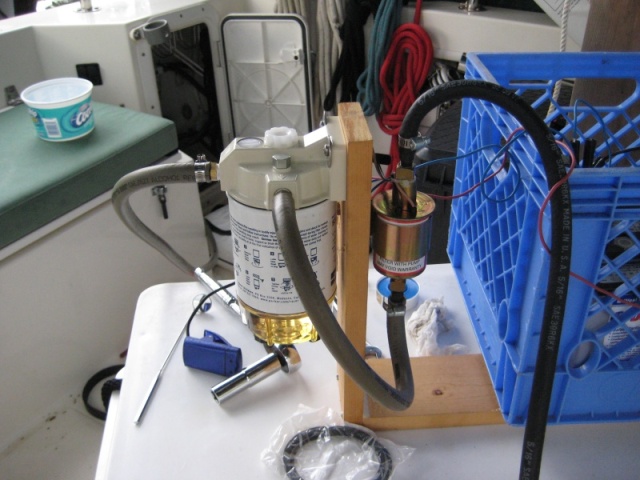Cell phones at gas stations and refueling:
FCC web site:
"The rumors and reports may be fueled by warnings posted at gas stations or included in wireless phone owners’ manuals suggesting that wireless phones should not be used around fuel vapors.
There Is No Evidence That These Reports Are True"
Static electricity is far more likely.
I do things a bit differently---and think it is safer. Don't put the fuel pump in the boat--for a variety of reasons: If you have a fire or leak, the fuel will be in the cockpit, you cannot easily get it out of the cockpit, and you probably cannot stop the fuel flow...You run greater personal risk.
My set up has been with approved fuel hose, thru the input to the Racor filter (Racors usually have two in, and two out ports). Just draw from the other "in".
I suppose that technically one could put a ground rod from the boat fuel plastic or metal tank...but I don't believe that the C Dory's have the fuel fill grounded: See
ABYC Fuel systems requirements
Each metal or metallic plated component of the fuel fill system and fuel tank, which is in contact with the fuel, must be grounded so that its resistance to the boat's ground is less than one olnn. Wire ends shall not be clamped between the fill pipes and hose.
Technically one probably should ground the pickup from the fuel tanks to the fuel fill fitting's metal, and perhaps even the metal in the racor on the boat...anyone do this? Certainly CDory is not in compliance with ABYC.
I do have a remote 12 volt battery (not in the boat) pumping system, the cans I am taking fuel out of, or putting into are on the ground. (thus grounded--as much as any plastic tank can be grounded. The battery is remote from the boat, and I used a switch which is ignition protected.
I recently upgraded the pump to a pump which is higher capacity.
Important when filling plastic cans, is that they be on the ground...
With the small volume of fuel we are pumping, the chance of a static spark is small. [/url]

